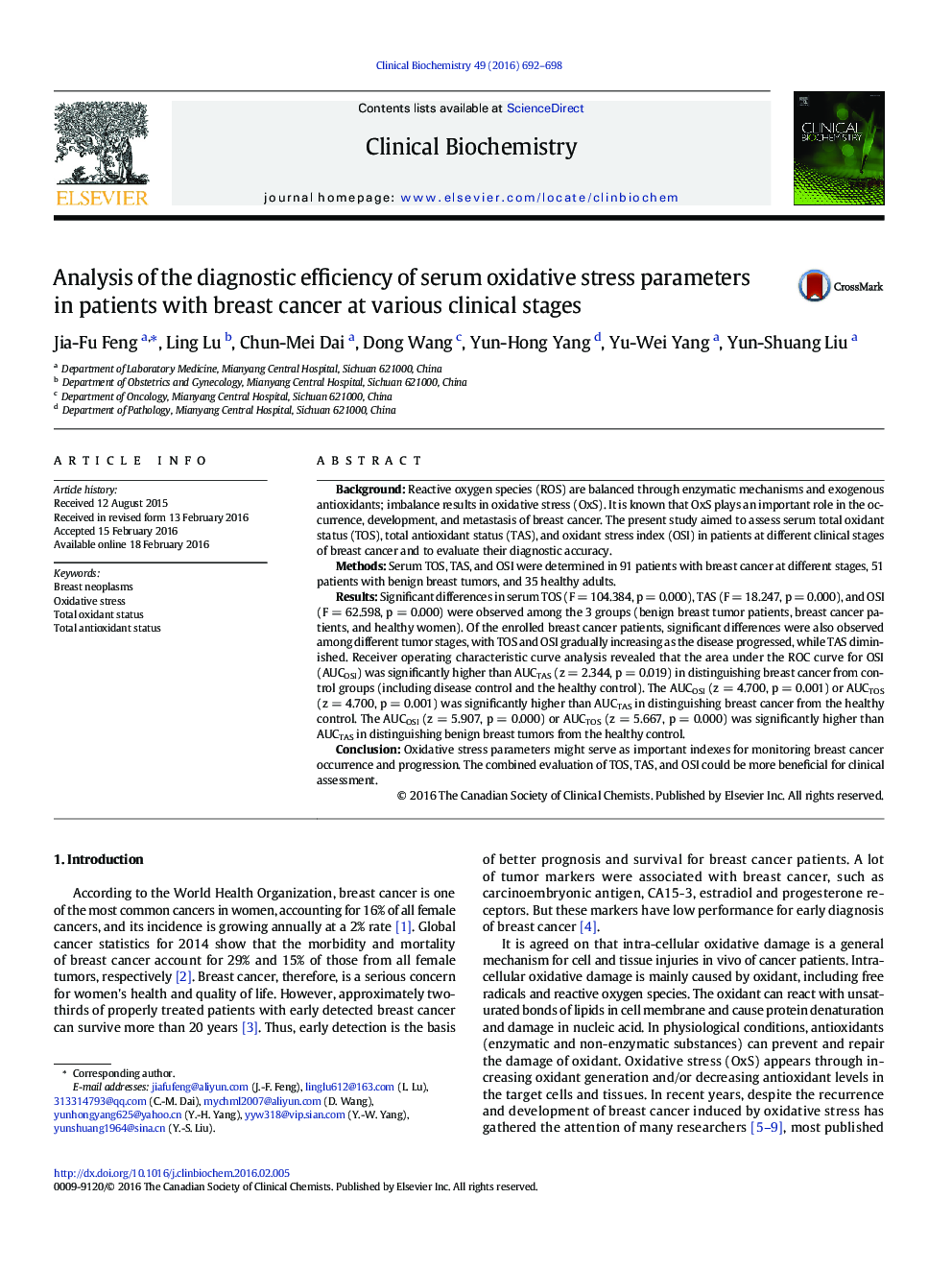| کد مقاله | کد نشریه | سال انتشار | مقاله انگلیسی | نسخه تمام متن |
|---|---|---|---|---|
| 1968554 | 1059725 | 2016 | 7 صفحه PDF | دانلود رایگان |
• Both the hormone estradiol receptor and progesterone receptor positive rate were similar between two disease groups.
• TOS and OSI were higher in patients than in healthy controls. TAS was lower.
• From stages I to IV, serum TOS and OSI gradually increased, serum TAS decreased with a midpoint between stages II and III.
• Boxplot analysis indicated that the OxS parameters were efficient for diagnosis.
• The cut-off values for each OxS parameter were determined through ROC curve analysis.
BackgroundReactive oxygen species (ROS) are balanced through enzymatic mechanisms and exogenous antioxidants; imbalance results in oxidative stress (OxS). It is known that OxS plays an important role in the occurrence, development, and metastasis of breast cancer. The present study aimed to assess serum total oxidant status (TOS), total antioxidant status (TAS), and oxidant stress index (OSI) in patients at different clinical stages of breast cancer and to evaluate their diagnostic accuracy.MethodsSerum TOS, TAS, and OSI were determined in 91 patients with breast cancer at different stages, 51 patients with benign breast tumors, and 35 healthy adults.ResultsSignificant differences in serum TOS (F = 104.384, p = 0.000), TAS (F = 18.247, p = 0.000), and OSI (F = 62.598, p = 0.000) were observed among the 3 groups (benign breast tumor patients, breast cancer patients, and healthy women). Of the enrolled breast cancer patients, significant differences were also observed among different tumor stages, with TOS and OSI gradually increasing as the disease progressed, while TAS diminished. Receiver operating characteristic curve analysis revealed that the area under the ROC curve for OSI (AUCOSI) was significantly higher than AUCTAS (z = 2.344, p = 0.019) in distinguishing breast cancer from control groups (including disease control and the healthy control). The AUCOSI (z = 4.700, p = 0.001) or AUCTOS (z = 4.700, p = 0.001) was significantly higher than AUCTAS in distinguishing breast cancer from the healthy control. The AUCOSI (z = 5.907, p = 0.000) or AUCTOS (z = 5.667, p = 0.000) was significantly higher than AUCTAS in distinguishing benign breast tumors from the healthy control.ConclusionOxidative stress parameters might serve as important indexes for monitoring breast cancer occurrence and progression. The combined evaluation of TOS, TAS, and OSI could be more beneficial for clinical assessment.
Journal: Clinical Biochemistry - Volume 49, Issue 9, June 2016, Pages 692–698
